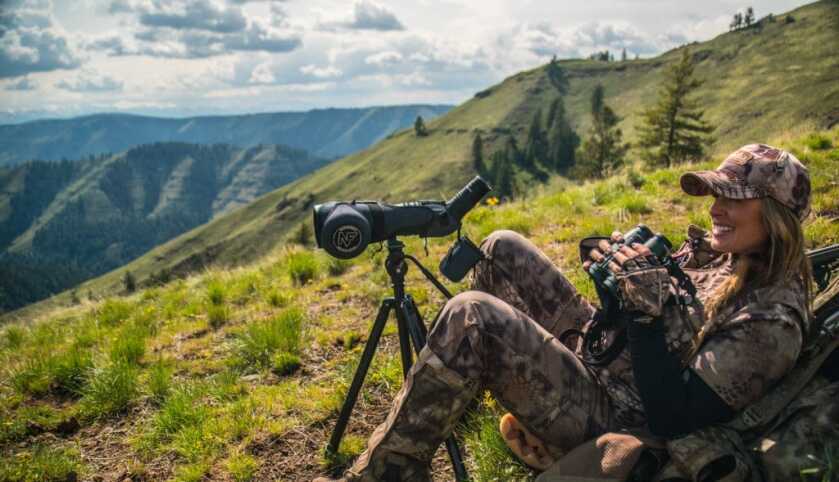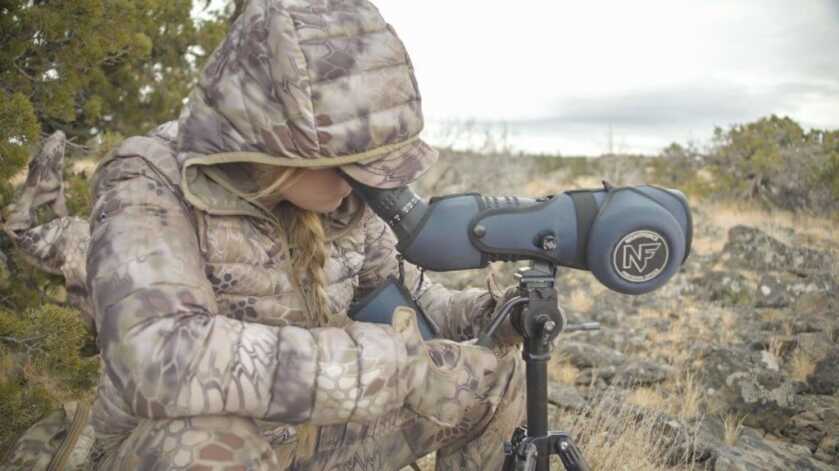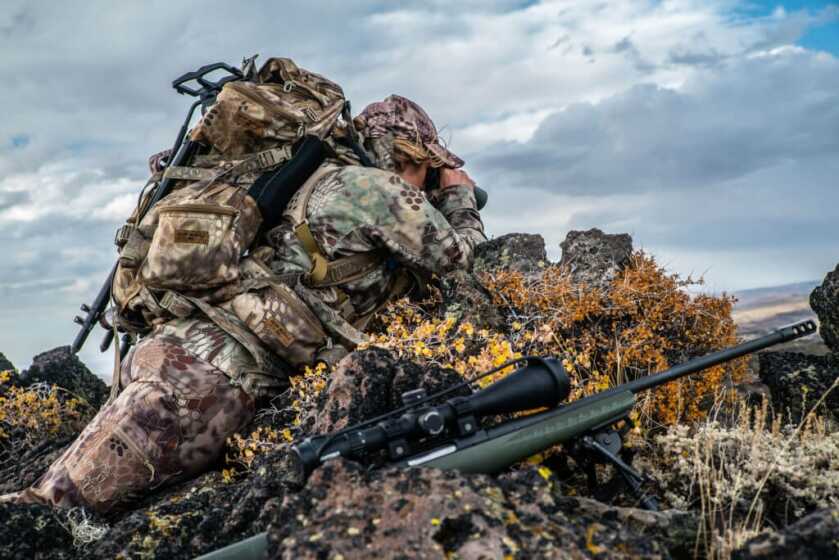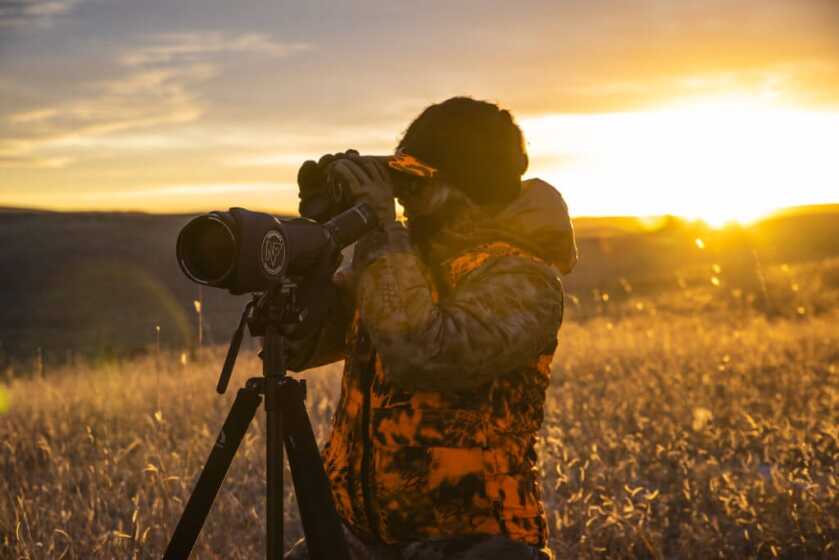
Glassing is a skill that takes time to develop. Spending time behind your glass training yourself to be able to recognize the characteristics of an animal will help to train your eye and allow you to see more concealed animals. The good thing is that modern optics allow hunters the opportunity to view expansive terrain without wearing out our bodies and boots. Having a good system for glassing will save you time and allow more opportunities to view animals that may otherwise go undetected.

1. Invest in Quality Optics
Animals are typically out feeding during low light conditions, often following the sunrise or sunset shadow line to bedding or feeding areas. Even in a tree stand, using a quality optic can allow the hunter to preview deer long before the human eye can detect them. In low light conditions, the human eye simply cannot detect the detail that quality light gathering binoculars can transmit. In order to observe more game animals during reduced or poor visibility conditions, having the utmost light transmission and overall optic clarity is critical. Make the investment in the highest quality binoculars that you can afford.
Look for Extra-Low Dispersion (ED) or High Definition (HD) glass which provides the highest available edge to edge clarity and color contrast. The additional contrast will aid the human eye in distinguishing between brown earth tones and the brown on a deer for example.
When considering the power of your binoculars such as an 8×32, the first number represents the amount that the optic will magnify the viewed object. The higher the number the greater the amount of magnification. The more magnification, the more important it becomes to use a rest to maintain a steady viewing area. The second number in the example, 32 is the diameter of the objective lens. The larger the number the larger the lens, which allows more light to be gathered in turn extending your glassing time in low light conditions.
Cabela’s Instinct Binoculars are price friendly offering ED glass and a wide variety of power ranges from 8×32, 10×32, 10×42, and 15×56. My personal preference is a 10×42 which allows for a nicely magnified field of view, and great light-gathering capabilities.
Nightforce TS-80 and TS-82 Spotting Scopes live up to the rugged, reliable repeatable reputation that Nightforce is known for. Featuring ED glass and large objective lenses that provide exceptional low light performance and true, brilliant color. The proprietary Nightforce result in excellent contrast, brightness and repels smudges and fingerprints.

2. Set Up
Your glassing set up is critical to minimize the chance of animals detecting your presence. Carefully approach the area that you would like to glass ensuring that you do not skyline yourself on the horizon, especially when it comes to animals that are moving or feeding. In order to break up your outline, use trees or shrubs behind or next to where you are going to position yourself. Get comfortable as you may be glassing an area for several hours or even for the day. Bring along a light-weight foam pad to sit on to insulate your body from the ground and keep you comfortable. You will want to have snacks and drinks handy and you may even consider adding a layer of clothing for warmth.
3. Use A Tripod Rest
A tripod is a tool that should never be left behind. Using a tripod while glassing will help to reduce movement in your viewing area from a shaky hold on your binoculars. Movement is the easiest thing for the eye to detect. The having a rest will allow you to steadily comb through terrain features allowing the human eye to detect movement or animal shapes more effectively.
If you are with someone and they are having a difficult time locating what you are seeing, try having them get directly over your shoulder looking in the same direction and focal plane as you are looking. The nice thing about the tripod is that you can utilize the pan head to lock in on an area of interest for intent viewing and the opportunity to have a hunting partner jump behind the glass as well.

In addition to glassing, a tripod will also double as an option to create a rifle shooting rest making it a valuable piece of gear.

4. Hasty Search
This is where you may quickly throw up your binoculars and look over a hillside to determine if there is an obvious animal present. Start glassing close working out so that you do not miss an animal that is right in front of you. The hasty search should be a quick look over an area and can be accomplished with or without a viewing rest depending on the situation.

5. Get Detailed
This is where you start picking an area apart looking for what may have been missed in your hasty search. Start by identifying landmarks as starting and ending points of your search. Again, looking from close to far, get an overlap system in your binoculars so that you are looking over the terrain twice per pass. This is also where a fluid head on your tripod really helps keep you on track and allows you to lock in for detailed viewing.
It can be easy to lose an animal or area of interest when transitioning from binoculars to a spotting scope. Before you make the transition, make sure to note surrounding land features and/or reference point that is noticeable.
When its down to the details, spotting scopes can’t be beaten. Giving you the ability to magnify to a great extent and burn through the brush to view what lies behind it in great detail. Due to the diminished field of view, be sure to stick with your overlap system so that you are sure not to miss any detail.
The fur or antler of an animal may shine on the side of a mountain in conditions like direct sunlight, however, most of the time, they are perfectly camouflaged and easy to pass by. You are looking for color or something that stands out from the natural terrain.
Employing the use of the above techniques is sure to increase your chance of success afield.
Join me in this episode of Pursue The Wild from Season 2 where I head to the Northwest Territories Canada and put my glassing skills to the ultimate test in pursuit of Dall Sheep with Mackenzie Mountain Outfitters.

